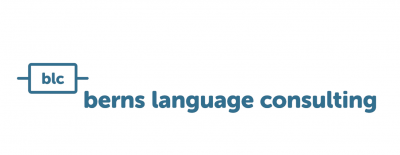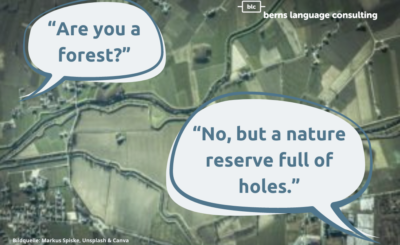Terms such as “Ontology” and “Semantic Web” are still a new territory for many. However, in today’s information society, which is characterized by digitalization and automation, these terms are gaining more and more importance. We would like to show you why ontologies are becoming increasingly significant as the next logical step after the introduction of efficient terminology management and the establishment of a consistent terminology collection.
But what are ontologies? What do they look like and how can they be represented? And what is their purpose – especially regarding their use in the Semantic Web?
What are Ontologies?
The term ontology stems from philosophy and is associated with the “doctrine of being”. The discipline Computer Science uses this perspective as its basis: For them ontologies are the “formal definition of concepts and their relations as a basis for a common understanding” (Busse et al. 2014).
More profoundly, one can thus speak of a formal representation of knowledge. Especially in the Semantic Web this can be used not only to provide knowledge structures but also as a basis for automated knowledge processing (see Encyclopedia of Business Informatics). Terms, their attributes and their relations to one another are thus formally represented so that they become machine-readable.
Understanding the Semantic Web
Ontologies and the Semantic Web are closely related, but what exactly is this Semantic Web?
It can be traced back to the World Wide Web Consortium (W3C) and is regarded as an extension of the already existing World Wide Web. Many also refer to it as a creation for Web 3.0, meaning that it is an “intelligent application of the World Wide Web for the transmission and exchange of content that can be understood by machines and humans alike” (Dengel 2012: 9). This approach enables an optimized cooperation between humans and machine that was not conceivable until some time ago.
For example, imagine searching for a family-friendly hotel with sea view in Northern Germany using a search engine or an online provider. Thanks to the ontology, not only the wording is included, but all semantic and content links within the ontology are used for your search. This way, the machine recognizes that it must be a hotel on the North Sea or Baltic Sea since the terms North Sea and Baltic Sea are linked with the term North Germany within the ontology.
How can ontologies be visualized?
The visualization of ontologies can be approached from two different viewpoints: the illustration for the human being and the provision for the machine.
As the next logical development of concept maps from terminology management, ontologies can also be represented in graphical form. The classes, instances, attributes and relations within an ontology are visualized here by nodes and edges. So-called ontology editors help here. BUT: While such a visualization enormously simplifies the acquisition of the ontology for humans, the machine cannot work with it.
But what makes ontologies machine-readable and thus usable in the context of the Semantic Web? The answer is provided by ontology languages. Standards such as RDF, RDFS or OWL bring ontologies into a machine-readable format and enable their formal representation. For example, the Web Ontology Language (OWL) is based on RDFS and offers an extensive vocabulary for the machine visualization of hierarchies and relationships between different terms. Through this kind of formal representation, ontologies can then serve as a supporting instance within the Semantic Web.
The following figure is intended as a small illustration of both the graphical as well as the formal representation of ontologies. Above all, one can identify the visualization of the ontology as a graph, but corresponding elements of the underlying ontology language can be seen as well. The elements marked with “rdfs: […]” represent the corresponding XML elements in the ontology language:
Source Stuckenschmidt (2009): Ontologien. Konzepte, Technologien und Anwendungen[/caption]
At a glance: Benefits and application areas of ontologies
Ontologies can be used wherever the semantics/meaning of information is to be formalized and made usable for the machine. Therefore it is no wonder that the main application scenarios for ontologies today are in the Semantic Web and in knowledge management.
For example, they can support semantic searches – e.g. in online shops. Here, instead of working on the basis of simple keywords, search queries are based on the background knowledge provided by the ontology. Since the machine carries out association processes comparable to the trains of thought in the human brain, the following applies: The more (correct!) information the domain-specific ontology contains, e.g. relations, synonyms, related terms, etc., the more precisely search engines can deliver content-relevant results to the user.
Ontologies can also be used in the context of knowledge-based consulting and assistance systems. These include driver assistance systems, chat bots, etc., in which semi-automatic problem-solving activities are carried out in the form of a “man-machine tandem”.
These are by far not all possible application scenarios of ontologies in the Semantic Web. Over the next few years, other possibilities will certainly see the light of day. Because one thing is clear: With ontologies, the journey in the Semantic Web is just beginning, and there will certainly be more exciting things to discover.
Have we awakened your interest?
Would you like to learn more about ontologies and how you can use this kind of knowledge representation for your own purposes? Feel free to browse through our other interesting blog entries on ontologies or contact us. We are happy to advise you and look forward to a lively exchange!





